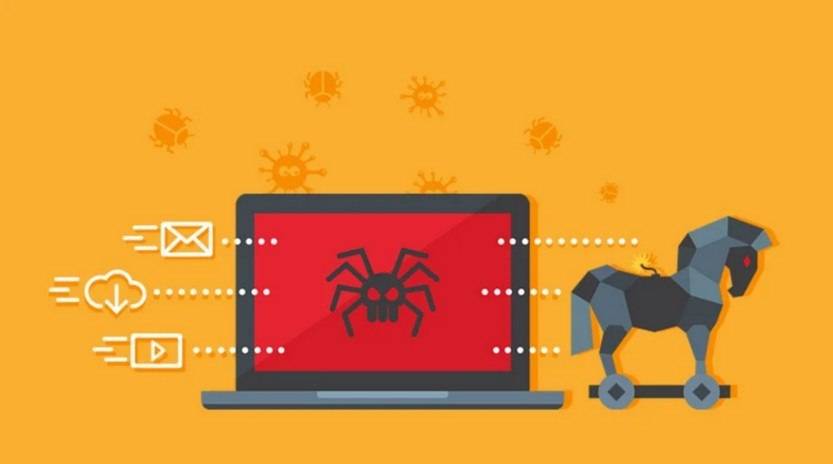Scams have been around for centuries, but with the rise of the internet, scammers have found new and creative ways to exploit unsuspecting victims. One such scam that has gained popularity in recent years is the ‘We Hacked Your Website’ fake blackmail Bitcoin scam. This article will delve into what this scam is, how it works, what to do if you have fallen victim, and provide valuable insights to help you stay safe online.
What is the ‘We Hacked Your Website’ Scam?
The ‘We Hacked Your Website’ scam is an email-based scam that preys on individuals who own websites or have an online presence. The scammer sends an email claiming to have hacked into the recipient’s website and gained access to sensitive information, such as customer data or login credentials. The email typically includes a threat to expose this information unless a ransom in Bitcoin is paid.
These emails are often designed to create panic and fear in the recipient, making them more likely to fall for the scam. The scammers may use various tactics to make the email appear legitimate, such as including personal information or using technical jargon to make it seem like they have indeed hacked into the website.
How Does the Scam Work?
The ‘We Hacked Your Website’ scam relies on social engineering techniques to trick victims into paying the ransom. Here is a step-by-step breakdown of how the scam typically unfolds:
- The scammer sends an email to the victim, claiming to have hacked into their website and obtained sensitive information.
- The email includes a threat to expose this information unless a ransom in Bitcoin is paid within a specified timeframe.
- The scammer may use scare tactics, such as claiming to have evidence of illegal activities or threatening to report the victim to law enforcement.
- To add credibility, the scammer may include personal information about the victim, such as their name, address, or phone number.
- The email often contains instructions on how to purchase Bitcoin and transfer it to the scammer’s wallet.
- The scammer may provide a deadline for payment and warn the victim against contacting law enforcement or attempting to trace the Bitcoin transaction.
- If the victim pays the ransom, the scammer may disappear without providing any proof of the alleged hack or deleting the sensitive information.
It is important to note that in most cases, the scammer does not actually have access to the victim’s website or any sensitive information. They rely on fear and intimidation to convince the victim to pay the ransom.
What to Do If You Have Fallen Victim?
If you have received an email claiming that your website has been hacked and you have fallen victim to the ‘We Hacked Your Website’ scam, here are some steps you can take:
- Stay calm: It is important not to panic and make hasty decisions. Scammers rely on fear to manipulate their victims.
- Do not respond or engage with the scammer: Responding to the email or attempting to negotiate with the scammer will only encourage further harassment.
- Scan your computer for malware or viruses: Use a reliable antivirus software like Malwarebytes Free to scan your computer for any potential threats.
- Change your passwords: Even if the scammer does not have access to your website, it is always a good idea to change your passwords as a precautionary measure.
- Report the scam: Forward the scam email to your email provider and report it to your local authorities. This can help in tracking down the scammers and preventing them from targeting others.
Remember, it is crucial to remain vigilant and skeptical of unsolicited emails or messages that demand payment or threaten to expose sensitive information. Legitimate organizations will not engage in such tactics.
Technical Details of the Scam
The ‘We Hacked Your Website’ scam relies on email spoofing and social engineering techniques to deceive victims. Here are some technical details of the scam:
- Email spoofing: Scammers often use email spoofing techniques to make the email appear as if it is coming from a legitimate source. They may use the victim’s own email address or a similar-looking domain to trick the recipient.
- Bitcoin transactions: The scammers typically request payment in Bitcoin due to its anonymous nature. Bitcoin transactions are difficult to trace, making it harder for law enforcement to track down the scammers.
- Personal information: Scammers may include personal information about the victim in the email to make it seem more legitimate. This information is often obtained from publicly available sources or previous data breaches.
Statistics on the ‘We Hacked Your Website’ Scam
While it is challenging to obtain accurate statistics on the ‘We Hacked Your Website’ scam due to underreporting, here are some insights:
- The scam has been active since at least 2018 and continues to evolve with new variations.
- According to the FBI’s Internet Crime Complaint Center (IC3), there were over 1,300 reported incidents of extortion-related scams in 2020, with losses exceeding $8.9 million.
- Many victims do not report the scam due to embarrassment or fear of further harassment.
Summary
The ‘We Hacked Your Website’ fake blackmail Bitcoin scam is a prevalent online scam that targets website owners and individuals with an online presence. Scammers use fear and intimidation to convince victims to pay a ransom in Bitcoin, claiming to have hacked into their website and obtained sensitive information. However, in most cases, the scammers do not have access to any information and rely on social engineering techniques to deceive their victims.
If you receive an email claiming that your website has been hacked, it is important to stay calm, not engage with the scammer, and take necessary precautions such as scanning your computer for malware and changing your passwords. Reporting the scam to your email provider and local authorities can also help in preventing further incidents.
Remember, staying vigilant and skeptical of unsolicited emails or messages is crucial in protecting











